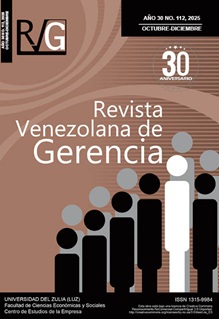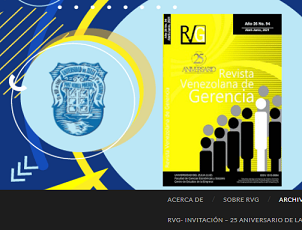Gestión del compromiso estudiantil: de la percepción de los directivos a la percepción de los estudiantes
Resumen
Este estudio tiene como objetivo central comprender cómo se gestiona el compromiso estudiantil desde una doble perspectiva: la de las instituciones universitarias y la del propio estudiantado. Para ello, traslada el concepto de compromiso ciudadano al ámbito académico y se propone cumplir con dos objetivos específicos: 1) identificar el rol que desempeña la universidad en el fomento del compromiso del estudiantado, y 2) describir la percepción que tienen los y las estudiantes sobre dicha gestión institucional. La metodología consistió en entrevistas a gestores y en grupos de discusión con estudiantes vinculados a asociaciones. Los resultados destacan la relevancia del compromiso estudiantil y del asociacionismo para el estudiantado y la universidad, aunque también revelan barreras como el escaso apoyo institucional. En las conclusiones, se discuten estas dos visiones en parte contradictorias sobre la gestión del compromiso que plantean desafíos y oportunidades para fortalecer la participación estudiantil.
Citas
Angwaomaodoko, E. A. (2024). Exploring civic engagement through student-led initiatives. International Research in Education, 12(2), 1–18. https://doi.org/10.5296/ire.v12i2.21934
Aspée, J., Cavieres, E., & González, J. (2018). El compromiso estudiantil ciudadano y su vínculo con el éxito educativo en la educación superior. Opción: Revista de Ciencias Humanas y Sociales, (86), 396–422. https://bit.ly/4hWpHO1
Aspée, J., González, J., & Cavieres-Fernández, E. (2019). Instrumento para medir el compromiso estudiantil integrando el desarrollo ciudadano, una propuesta desde Latinoamérica. Revista Complutense de Educación, 30(2), 399–421. https://doi.org/10.5209/RCED.57518
Axelson, R. D., & Flick, A. (2010). Defining Student Engagement. Change: The Magazine of Higher Learning, 43(1), 38–43. https://doi.org/10.1080/00091383.2011.533096
Bouckaert, G., & Van de Walle, S. (2003). Comparing measures of citizen trust and user satisfaction as indicators of ‘Good Governance’: Difficulties in linking trust and satisfaction Indicators. International Review of Administrative Sciences, 69(3), 329–343. https://doi.org/10.1177/0020852303693003
Bovaird, T., & Loeffler, E. (2012). From engagement to co-production: The contribution of users and communities to outcomes and public value. Voluntas, 23(4), 1119–1138. https://doi.org/10.1007/s11266-012-9309-6
Brady, H. (1999). Political Participation. En J. P. Robinson, P. R. Shaver, & L. S. Wrightsman (Eds.), Measures of Political Attitudes (pp. 737–801). Academic Press.
Claes, E., & Hooghe, M. (2008, 17-19 de junio). Citizenship education and political interest: Political interest as an intermediary variable in explaining the effects of citizenship education [Resumen de presentación de la conferencia]. Conferencia “Civic Education and Political Participation,” American Political Science Association. https://bit.ly/3xFpNqL
Coursey, D., Yang, K., & Pandey, S. K. (2012). Public Service Motivation (PSM) and Support for Citizen Participation: A Test of Perry and Vandenabeele’s Reformulation of PSM theory. Public Administration Review, 72(4), 572–582. https://doi.org/10.2307/41506807
Davidsen, A., & Reventlow, S. (2011). Narratives about Patients with Psychological Problems Illustrate Different Professional Roles among General Practitioners. Journal of Health Psychology, 16(6), 959–968. https://doi.org/10.1177/1359105310397219
Denhardt, J. V., & Denhardt, R. B. (2015). The New Public Service Revisited. Public Administration Review, 75(5), 664–672. https://doi.org/10.1111/PUAR.12347
Do, T., Hufnagle, A. S., Maruyama, G., Lopez-Hurtado, I., Song, W., & Furco, A. (2024). Community engagement, service learning, and underrepresented college student success: An examination of multiple cohorts. Analyses of Social Issues and Public Policy, 24(3), 1226–1251. https://doi.org/10.1111/asap.12408
Ekman, J., & Amnå, E. (2012). Political participation and civic engagement: Towards a new typology. Human Affairs, 22(3), 283–300. https://doi.org/10.2478/s13374-012-0024-1
Groccia, J. E. (2018). What Is Student Engagement? New Directions for Teaching and Learning, 2018(154), 11–20. https://doi.org/10.1002/tl.20287
Homont, L. P. P. (2025). El valor intangible de la coproducción digital del sector público: El compromiso y la confianza ciudadana generada por Avisos Madrid [Tesis doctoral, Universidad Complutense de Madrid].
Kuh, G. (2009). The national survey of student engagement: Conceptual and empirical foundations. New Directions for Institutional Research, 2009(141), 5–20. https://doi.org/10.1002/ir.283
Kumagai, S., & Iorio, F. (2020). Building Trust in Government through Citizen Engagement. World Bank. https://bit.ly/3y0A4OA
Ley 2 de 2023, de 22 de marzo, del Sistema Universitario. (2023, 23 de marzo). Boletín Oficial del Estado, núm. 70.
Macfarlane, B., & Tomlinson, M. (2017). Critiques of Student Engagement. Higher Education Policy, 30, 5–21. https://doi.org/10.1057/s41307-016-0027-3
Martini, M., Rollero, C., Rizzo, M., Frugiuele, P., Cappa, L., & Agosta, V. (2023). Educating Youth to Civic Engagement for Social Justice: Evaluation of a Secondary School Project. Behavioral Sciences, 13(8), 650. https://doi.org/10.3390/bs13080650
McMahon, B., & Portelli, J. (2004). Engagement for what? Beyond popular discourses of student engagement. Leadership and Policy in Schools, 3(1), 59–76. https://doi.org/10.1076/lpos.3.1.59.27841
Meijer, A. (2012). Co-Production in an Information Age: Individual and Community Engagement Supported by New Media. Voluntas, 23(4), 1156–1172. https://doi.org/10.1007/s11266-012-9311-z
Naciones Unidas. (s.f.). Objetivo 16: Promover sociedades justas, pacíficas e inclusivas. https://bit.ly/4hSfaDH
Pineda-Báez, C., Bermúdez-Aponte, J.-J., Rubiano-Bello, Á., Pava-García, N., Suárez-García, R., & Cruz-Becerra, F. (2014). Compromiso estudiantil y desempeño académico en el contexto universitario colombiano. RELIEVE, 20(2), 1–20. https://doi.org/10.7203/relieve.20.2.4238
Piqueiras, P., & Canel, M. J. (2021). Exploring Citizen’s Perceptions-based Intangible Resources in the Public Sector: An Analysis of the Relation Between Wealth and Engagement and Trust in 17 Countries. Central European Journal of Communication, 14(1), 119–139. https://doi.org/10.51480/1899-5101.14.1(28).7
Piqueiras, P., Canel, M. J., & Luoma-aho, V. (2020). Citizen engagement and public sector communication. En V. Luoma-aho & M. J. Canel (Eds.), The handbook of public sector communication (pp. 277–288). Wiley-Blackwell.
Putnam, R. D. (1993). The prosperous community: Social capital and public life. American Prospect, (13), 35–42. https://faculty.washington.edu/matsueda/courses/590/Readings/Putham%201993%20Am%20Prospect.pdf
Putnam, R. D. (1995). Bowling alone: America’s declining social capital. Journal of Democracy, 6(1), 64–78. https://doi.org/10.1353/jod.1995.0002
Real Decreto 1791/2010, de 31 de diciembre, por el que se aprueba el Estatuto del Estudiante Universitario. (2010, 1 de enero). Boletín Oficial del Estado, núm. 318.
Uslaner, E. M. (2003). Civic Engagement in America: Why People Participate in Political and Social Life. The Democracy Collaborative & Center for the Study of Voluntary Organizations and Service. https://bit.ly/3W3D8TY
Van de Walle, S., Van Roosbroek, S., & Bouckaert, G. (2008). Trust in the public sector: is there any evidence for a long-term decline? International Review of Administrative Sciences, 74(1), 47–64. https://doi.org/10.1177/0020852307085733
Verba, S., & Nie, N. H. (1972). Participation in America: Social equality and political democracy. Harper & Row.
Voorberg, W. H., Bekkers, V. J. J. M., & Tummers, L. G. (2015). A Systematic Review of Co-Creation and Co-Production: Embarking on the social innovation journey. Public Management Review, 17(9), 1333–1357. https://doi.org/10.1080/14719037.2014.93050
World Bank. (2014). Strategic Framework for Mainstreaming Citizen Engagement in World Bank Group Operations. https://bit.ly/3UiRuP4
Yang, K. (2005). Public Administrators’ Trust in Citizens: A Missing Link in Citizen Involvement Efforts. Public Administration Review, 65(3), 273–285. https://doi.org/10.1111/j.1540-6210.2005.00453.x
Yang, K., & Callahan, K. (2007). Citizen Involvement Efforts and Bureaucratic Responsiveness: Participatory Values, Stakeholder Pressures, and Administrative Practicality. Public Administration Review, 67(2), 249–264. https://doi.org/10.1111/j.1540-6210.2007.00711.x

Esta obra está bajo licencia internacional Creative Commons Reconocimiento-NoComercial-CompartirIgual 4.0.







.png)






























